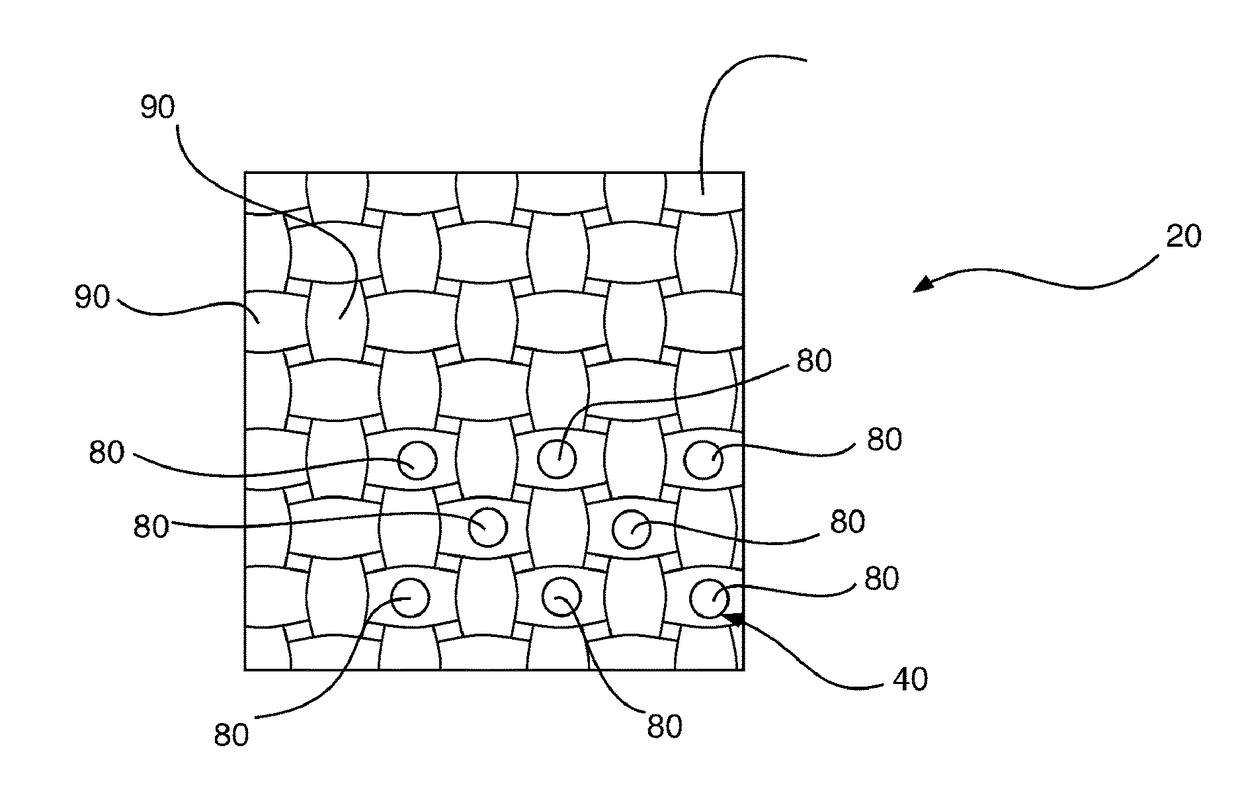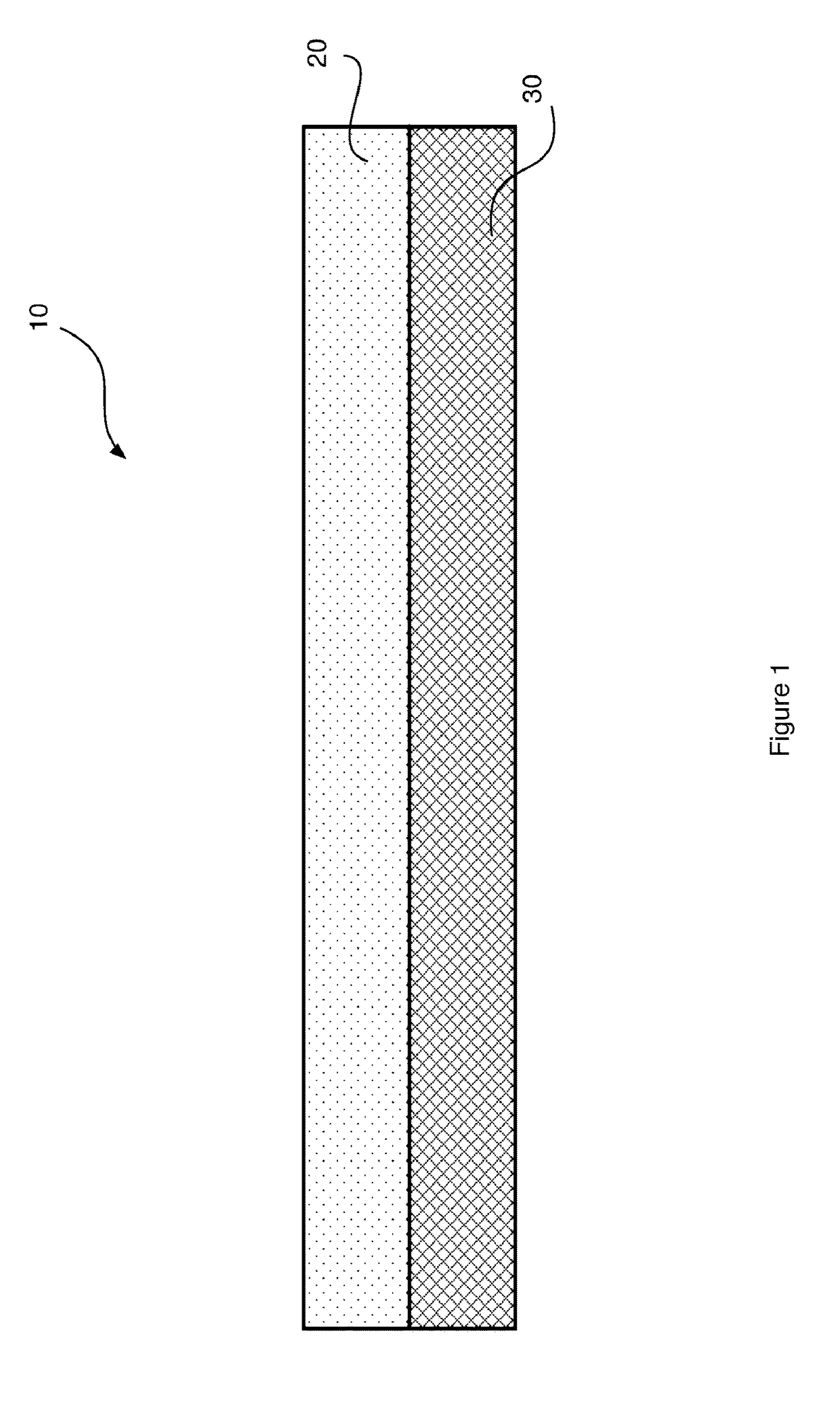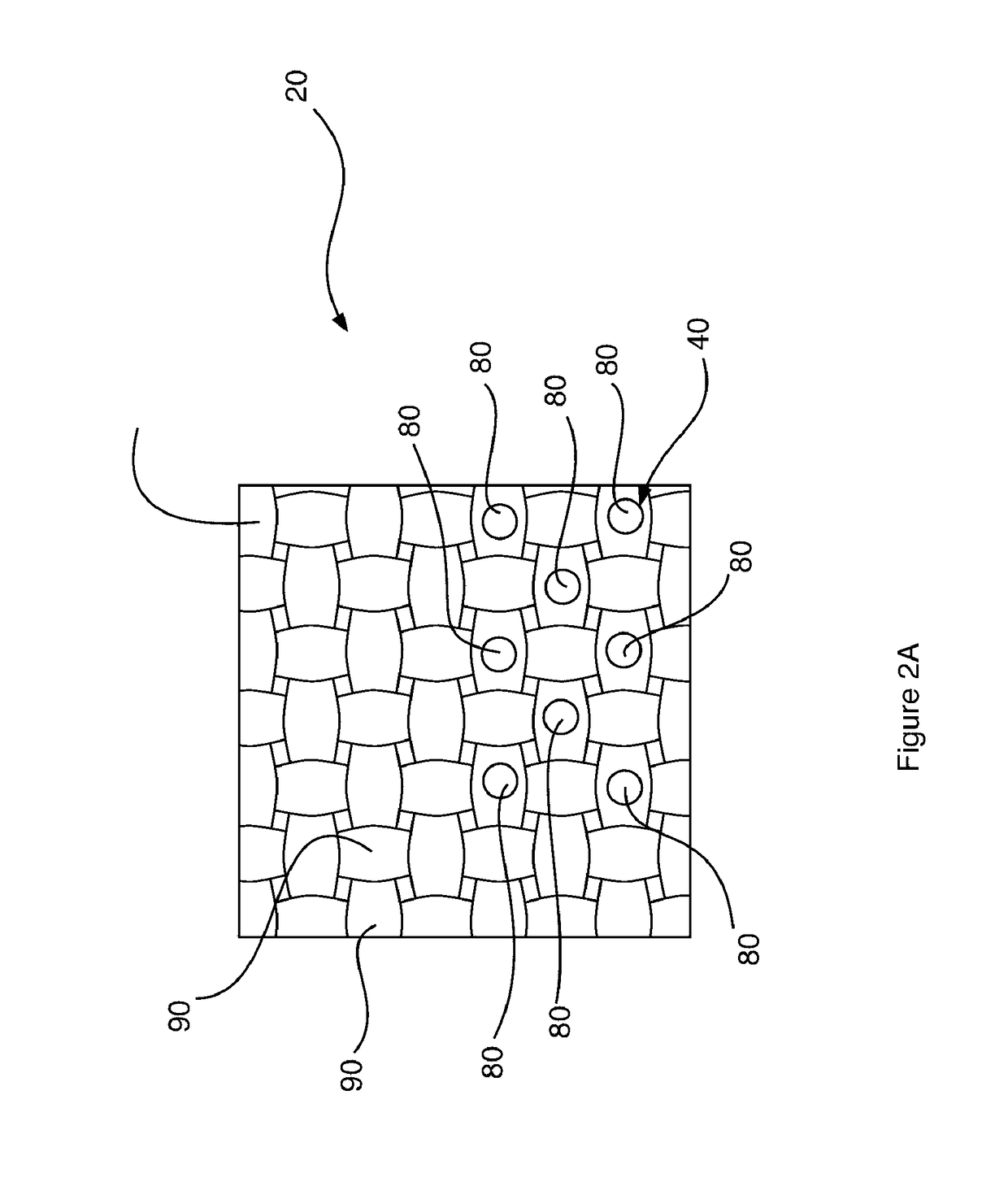An abrasion resistant material and method of construction
- Summary
- Abstract
- Description
- Claims
- Application Information
AI Technical Summary
Benefits of technology
Problems solved by technology
Method used
Image
Examples
example 1
[0083]This example illustrates the benefit that a correctly designed first layer provides in avoiding burst failure or the underlying second layer. A 230 g / m2double jersey 100% para-aramid fabric is placed under a 350 g / m2 100% cotton denim fabric to form a composite abrasion resistant material. When tested for abrasion resistance according to EN 13634:2010, the composite abrasion resistant material has a mean abrasion resistance of 4.01 and a standard deviation of 0.42 seconds.
[0084]The same 230 g / m2 double jersey 100% para-aramid fabric is placed under a under a 420 g / m2 knitted unbrushed fleecy loop pile 100% cotton fabric to make a composite composite abrasion resistant material. When tested for abrasion resistance according to EN 13634:2010, the composite abrasion resistant material has a mean abrasion resistance of 1.06 and a standard deviation of 0.23 seconds. The double jersey 100% para-aramid fabric is protected from bursting by the 100% cotton denim fabric so failure is by...
example 2
[0085]This example illustrates the synergistic effect of the first and second layers forming the abrasion resistant material, wherein the first and second layers combine to provide higher abrasion resistance compared to the addition of the abrasion resistance of each of the first and second layers tested by itself.
[0086]In the first part of this experiment a 350 g / m2 100% cotton denim fabric has a mean abrasion resistance of 0.41 and a standard deviation of 0.07 seconds and fails due to abrasion fatigue. A 400 g / m2 knitted terry loop pile 80% para-aramid / 20% ultra high molecular weight polyethylene fabric has a mean abrasion resistance of 1.72 and a standard deviation of 1.13 seconds and fails due to a combination of fabric burst and abrasion fatigue.
[0087]A composite combination of these two fabrics with the 100% cotton denim fabric in contact with the abrasion surface and the knitted terry loop pile 80% para-aramid / 20% ultra high molecular weight polyethylene fabric in contact wit...
example 3
[0089]This example illustrates the benefit that a correctly designed abrasion resistant material provides in avoiding abrasion failure. Specifically this example shows the benefit of a well designed composite abrasion resistant material. All of the abrasion resistant materials tested in this example were tested for abrasion resistance according to EN 13634:2010. Each abrasion resistant material was tested having the same first layer which was a 470 g / m2 100% cotton denim fabric that had a mean abrasion resistance of 0.85 and a standard deviation of 0.19 seconds. This first layer was utilized in all tests to avoid bursting of the underlaying second layer influencing the results.
[0090]A single layer protective liner such as a 260 g / m2 100% para-aramid plain weave fabric had a mean abrasion resistance of 1.96 and a standard deviation of 0.30 seconds and failed due to abrasion. The protective layer wears through absorbing energy but because it is only a single layer it fails by burst or...
PUM
| Property | Measurement | Unit |
|---|---|---|
| Force | aaaaa | aaaaa |
| Electrical resistance | aaaaa | aaaaa |
| Tensile properties | aaaaa | aaaaa |
Abstract
Description
Claims
Application Information
 Login to View More
Login to View More - R&D
- Intellectual Property
- Life Sciences
- Materials
- Tech Scout
- Unparalleled Data Quality
- Higher Quality Content
- 60% Fewer Hallucinations
Browse by: Latest US Patents, China's latest patents, Technical Efficacy Thesaurus, Application Domain, Technology Topic, Popular Technical Reports.
© 2025 PatSnap. All rights reserved.Legal|Privacy policy|Modern Slavery Act Transparency Statement|Sitemap|About US| Contact US: help@patsnap.com



